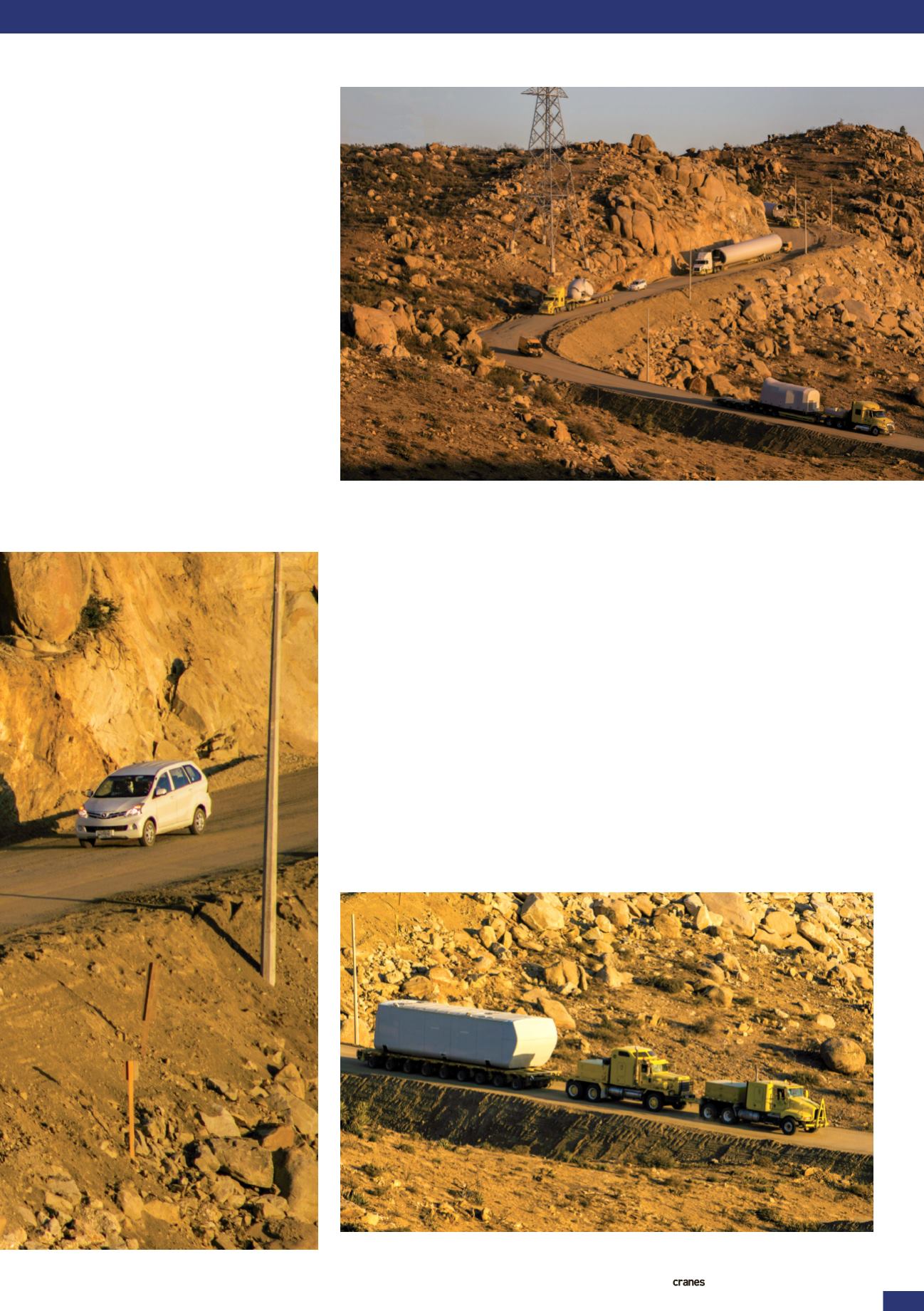
INTERNATIONAL ANDSPECIALIZED TRANSPORT
■
APRIL 2015
37
SPECIALIZED TRANSPORT
thenacelleswere each12.7m long, 3.2m
wide and4.2mhigh. The smaller pieces to
bemoved included thehubs, which each
weighed34.5 tons (31.2 tonnes) andwere
5.5m long, 3.8mwide x3.8mhigh. The
drive trainsweighed62 tons (56.2 tonnes)
each andwere 5.5m long, 2.9mwide and
3.4mhigh.
The blades eachweighed14.5 tons
(13.1 tonnes) andwere 54.9m long, 2.8m
wide and4mhigh. Theywere transported
by rail from the factory inColorado,
USA toPlasterCity, before beingmoved
byTradelossa toSanDiego and across
the border toLaRumorosa. The route
requiredpermits and approvals from the
authorities inCalifornia.Due to the size of
the blades, transportwas onlypermitted
at a certain time, four days aweek. At
the start of theproject only three blades
were allowed tobemoved aday; thiswas,
however, increased to four aday.
“It took fourmonths tomove the
equipment,” a spokesperson from
Tradelossa said. “Therewere a lot of
challenges on theway. ThePort of
Ensenada, for example, has limitations in
terms of infrastructure and, at onepoint,
itwas filledwith just components and
transport equipment from the project.”
Changing route
Tohelp ease logistics at theport, the
equipmentwas swiftlymoved to the
staging area at the entrance of the site.
TradelossausednewGoldhofer blade
trailerswith a systemdesignedbyVestas
to allow the blade tohave somemovement
during transport. To transport the towers
and remaining cargo the companyused
Schnabel type trailer configurations.
The original scope of the projectwas to
have the components arrive at thePort of
Ensenada and thenuse themainhighway
toLaRumorosa. A fewmonths before
the project tookplace, however, the area
was subject to anumber of earthquakes
ranging inmagnitude from1.3 to4.3on
theRichter scale and after heavy rainfall a
300 yard sectionof thehighway collapsed.
The roadwas out of service for a year, and
as a result, a secondary roadhad tobe
used to transport the components.
“The secondary road required a lot
more support in terms of escorts and
more support for thepeople and teams
travellingwith the convoy,” a spokesperson
said. “Using this new route increased the
original travel time by 60%. The roadwas
alsoquitenarrow, so it hadmore safety
concerns than theprevious route.”
In total, approximately 450 inland
movesweremade to transport the
components to the site.
TheLaRumorosawind farmwill be
built in fivephases and is scheduled for
completion in2023.
■
Approximately450 inlandmoves
weremade to transport the
components to the site
TradelossausednewGoldhofer trailers to transport the turbine sections


